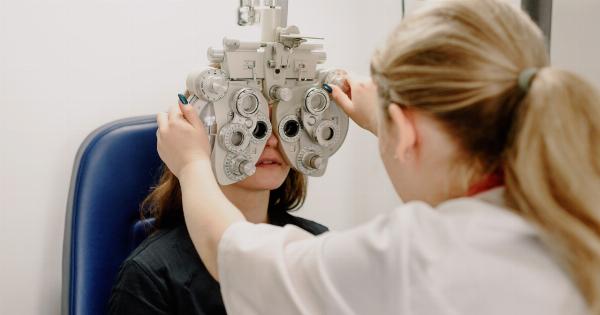Pregnancy is a beautiful journey that brings joy and anticipation to expectant mothers and their loved ones. However, amid the happiness and excitement, there are instances when pregnancy can become a challenging and even life-threatening experience.
One such complication that can turn a pregnancy into a high-risk situation is placenta accreta.
Understanding Placenta Accreta
Placenta accreta is a condition that occurs when the placenta implants itself too deeply into the uterine wall. In a normal pregnancy, the placenta detaches from the uterine wall after childbirth.
But in the case of placenta accreta, the placenta remains firmly attached and fails to separate naturally. This can lead to severe blood loss during delivery and poses a significant risk to both the mother and the baby.
Causes and Risk Factors
Although the exact cause of placenta accreta is still unknown, certain risk factors increase the likelihood of developing this condition.
Women who have had previous cesarean sections, uterine surgeries, or a history of placenta previa are at higher risk. Additionally, advanced maternal age, multiple pregnancies, and a damaged endometrium can also contribute to the occurrence of placenta accreta.
Types of Placenta Accreta
Placenta accreta is further classified into different types based on the depth of placental invasion:.
1. Placenta Accreta
In this type, the placenta attaches itself deeply to the uterine wall. It does not invade the uterine muscle but remains firmly attached and fails to separate after birth. This is the mildest form of placenta accreta.
2. Placenta Increta
Placenta increta occurs when the placenta not only attaches deeply to the uterine wall but also invades the uterine muscle. The invasion of the placenta into the muscle layer makes it challenging to remove during delivery.
3. Placenta Percreta
The most severe form of placenta accreta is placenta percreta. In this type, the placenta invades through the uterine wall and attaches itself to nearby organs, such as the bladder or even the rectum.
This deep penetration can cause significant complications and requires specialized surgical intervention.
Diagnosis
Diagnosing placenta accreta before delivery is crucial for planning proper management and reducing potential risks. The following diagnostic methods are employed:.
1. Ultrasound
An ultrasound examination, particularly a transvaginal ultrasound, can help identify signs of placenta accreta. It allows visualizing the depth of placental implantation and any abnormal connections to nearby organs.
2. Magnetic Resonance Imaging (MRI)
In complicated cases or when ultrasound results are inconclusive, an MRI is usually performed. An MRI provides a more detailed image of the uterus, allowing healthcare providers to assess the extent of placental invasion.
Treatment and Management
The management of placenta accreta involves a multidisciplinary team consisting of obstetricians, radiologists, and surgeons. The primary goal is to minimize the risks to both the mother and the baby while ensuring the best possible outcome.
1. Antenatal Care
Early detection of placenta accreta during routine prenatal care is crucial. Expectant mothers with identified risk factors should be closely monitored throughout their pregnancy.
Prenatal visits should include regular ultrasounds and close observation to identify any signs of placental invasion.
2. Delivery Planning
Delivery planning is a critical aspect of managing placenta accreta. A planned cesarean section (C-section) combined with a hysterectomy is the most common approach to ensure the complete removal of the placenta.
The surgery is often scheduled before the anticipated date of labor to minimize the risks associated with excessive bleeding.
3. Blood Transfusion
Due to the high risk of blood loss during delivery, blood transfusion is an essential part of managing placenta accreta.
Determining the appropriate blood type and preparing for potential transfusion is crucial to ensure immediate care in case of excessive bleeding.
4. Neonatal Intensive Care
Given the complex nature of placenta accreta, the baby may require special attention and care.
Neonatal intensive care facilities should be readily available to address any potential complications that might arise as a result of premature delivery or other factors associated with the condition.
Preventing Placenta Accreta
While it may not be possible to completely prevent placenta accreta, there are certain measures women can take to reduce the risk:.
1. Limiting Cesarean Sections
Cesarean sections are a significant risk factor for placenta accreta. Minimizing unnecessary C-sections, especially in cases where vaginal delivery is a viable option, can help reduce the likelihood of developing placenta accreta.
2. Timely Management of Placenta Previa
Proper management and timely treatment of placenta previa, a condition where the placenta covers the cervix, can help prevent placenta accreta. Addressing placenta previa early reduces the chances of placenta accreta and its associated complications.
Conclusion
Placenta accreta is a life-threatening pregnancy complication that demands meticulous monitoring and management.
It is crucial for expectant mothers and healthcare providers to be aware of the risk factors and diagnostic methods associated with placenta accreta. Early detection, coupled with a well-executed delivery plan and coordinated medical care, can greatly improve the chances of a successful outcome for both the mother and the baby.






























